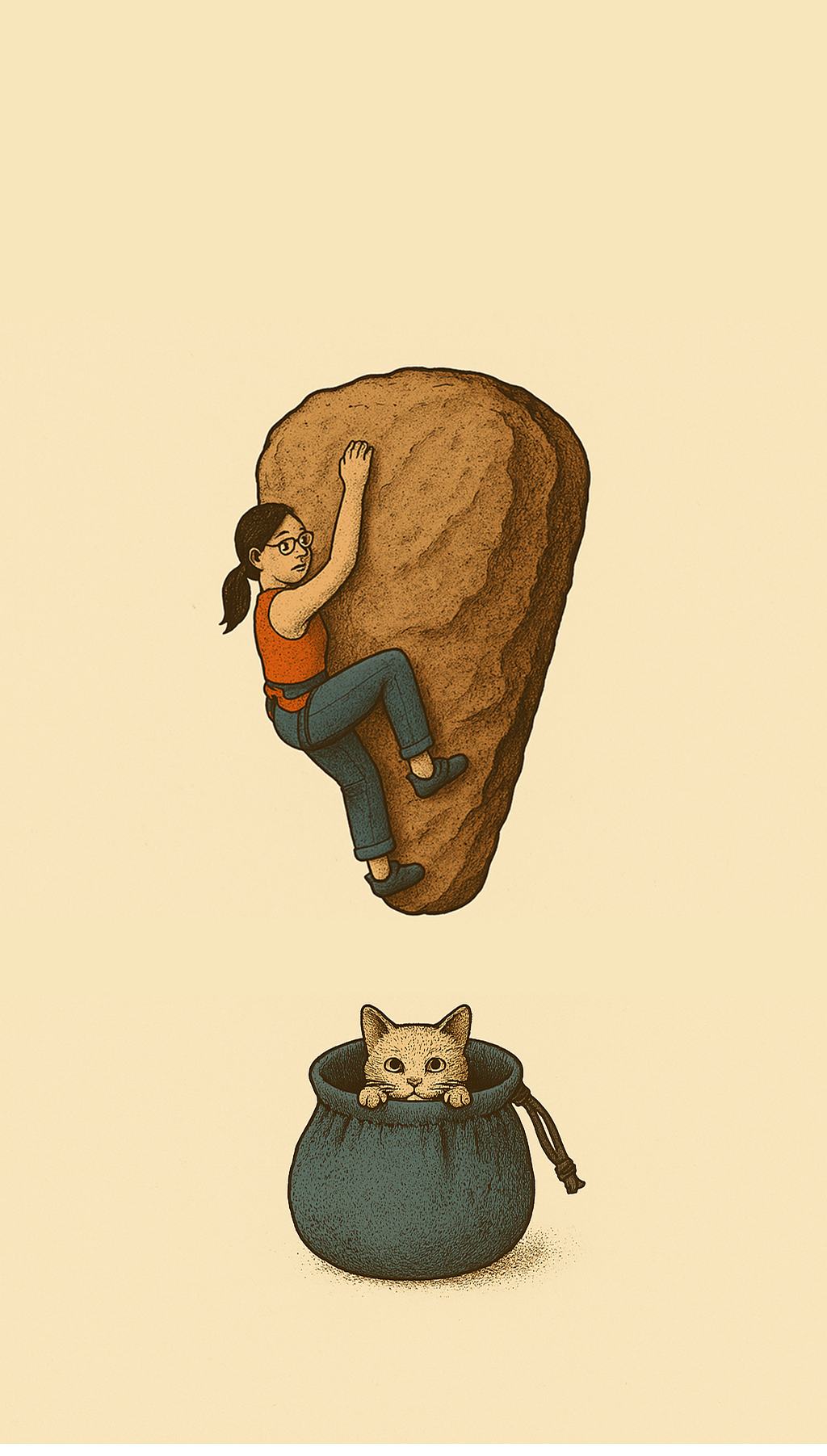The Trust Exchange: Slow Weight Transfer Between Fingers and Toe Hooks
Purpose
To cultivate precise, mindful control of weight transfer between hand and toe hook, fostering trust in toe hooks under load.
This drill is designed to train the nervous system to recognize and trust the gradual, controlled shift of support from hand to foot—and back again.
Context / When to Use
Often on steep routes or compression problems, we slap a toe hook on and hope for the best, bracing with our arms out of fear of "letting go" onto it.
In the middle of hard moves, there’s no time to truly feel how well a toe hook is holding.
This drill gives you the space to learn, test, and embody that trust, so it’s available under pressure.
Setup
Choose a low section of wall with a solid, textured arete or corner you can toe hook easily at roughly 45 degrees.
Place your right foot on a flat edge foothold near the floor (imagine it as a “foothold crimp”).
Establish a secure right hand jug to lock in your upper body on that side.
Place your left hand on a solid hold that lets you lean away gently.
Make sure you can toe hook the arete to your left comfortably.
This is deliberately low-risk. The floor is right there, no falling hazard.
Instructions
Establish the Hook
Engage your left toe onto the arete, feeling the contact point.
Let your upper body settle into both handholds, with even distribution.Begin the Weight Shift
Slowly, with full awareness, lean your torso to the right.
As you shift right, notice the way the left toe hook pulls, engaging up through the shin, quad, and hip.
Feel the eccentric control in your posterior chain resisting the fall away.Sense the Exchange
Track your left hand as it releases incrementally, unit by unit.
Match this with the toe taking up that load in perfect counterbalance.
Imagine passing the baton of support from hand to foot.
Stay for a moment at the limit of comfort, noticing:Can I trust the toe?
What muscles are helping?
Am I breathing?
Reverse with Equal Care
Now undo the shift just as slowly.
Let the toe hook give back weight to the hand.
Notice the hand closing again with familiar, safe strength.
Keep breath smooth and even.Repeat the Seesaw
Go back and forth several times, at your own tempo.
Stay tuned to the micro-adjustments in hips, shoulders, and spine.
Treat it as a friendly tug-of-war, not a battle—no jerks, no rush.
Keep the goal simple: pure exploration of weight transfer.
Mindful Cues
Feel the line of tension running from toe to hand.
Can I let the toe hook take more? Can I trust it?
How slowly can I give and take weight?
Notice where I hold my breath. Let it go.
Transferability
This unit-by-unit exchange is not just for this drill.
Practice it on overhangs, roofs, steep compression.
Apply it to heel hooks, inside edges, toe cams.
Anywhere you rely on a foot to hold your weight while you release your grip.
Why It Matters
In the heat of a crux, you rarely have time to negotiate trust in a hook.
This drill teaches your body in safety:
That the foot can catch you even as you “fall” away.
That you don’t need to over-grip out of fear.
That weight can shift smoothly, consciously, controllably.
You’re training your nervous system to say yes to trusting the foot—so when it counts, it’s there without thinking.
Closing Reflection
I can pass the work between foot and hand. I can share the load. I can trust the hook to hold—even as I fall away.
